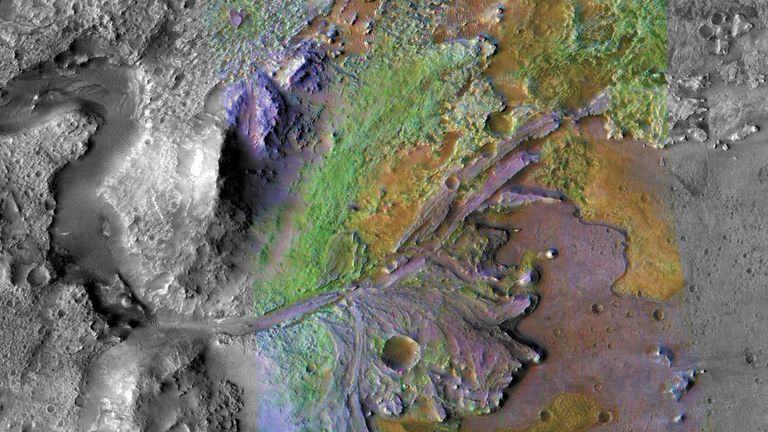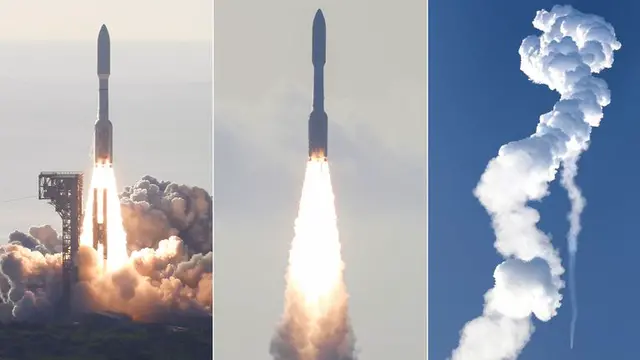NASA has successfully launched its new Perseverance rover to Mars, beginning a mission to search for signs of alien life on the planet.
The Mars 2020 mission launched on the back of an Atlas V rocket, the most powerful currently in use by humanity, which took its payload to an altitude of greater than 250 miles - the same as the International Space Station - in three minutes.
It sets the ground not only to discover whether life ever existed on Mars but also ahead of a potential manned mission to put the first humans on the red planet.
The mission is not set to land on Mars until the early afternoon of 18 February 2021, but there will not be much time for deliberation when it is heading towards the Martian surface.
The rover, which has a mass of 1,050kg (2,313lbs), could easily simply add to the craters on the planet's surface.
NASA hopes its brand new guidance and parachute-triggering technology will help steer the rover away from these hazards but its controllers back on Earth will be helpless.
Radio transmissions from Mars take 10 minutes to reach Earth so by the time the controllers see Perseverance has entered the atmosphere, it will have either already landed or been destroyed - as most attempts to land on Mars have been.
Perseverance follows in the tracks of the car-sized Curiosity rover which landed in 2012 and is - despite NASA's expectations - still operational, having confirmed its landing site, the Gale Crater, hosted a lake billions of years ago which could have supported microbial life.
The new rover is intended to touch down in an ancient river delta and former lake on the Martian surface known as the Jezero Crater.

Image:The rover will land in the Jezero crater. Pic: NASA
The Jezero Crater is full of obstacles and dangers to the rover, including boulders, cliffs, sand dunes and depressions, which could end the mission, both in landing and as the rover drives along the surface.
The deposits in the crater are rich in clay minerals, which form in the presence of water, meaning life may have once existed there - and such sediments on Earth have been known to store microscopic fossils.
Scientists have also noted that the crater doesn't have a depth which matches its diameter, which means sediment likely entered the crater through flowing water - potentially up to a kilometre of it - all of which will offer rich pickings for signs of ancient life.

Eight things you need to know about today's NASA launch
NASA says that verifying ancient life on Mars carries an enormous burden of proof.
While the remnants of microbial life on Mars could have left telltale marks in the sediment layers which Perseverance will drill down into, it might be difficult to analyse them on the planet itself.
After drilling into the best rocks, the rover will cache about half a kilogram of rock sample in dozens of titanium tubes that will be collected by another rover in approximately a decade's time.
NASA and the European Space Agency are planning a Mars sample return campaign, during which these samples can be examined with instruments that are far too large and complex to send to Mars.
 简体中文
简体中文



